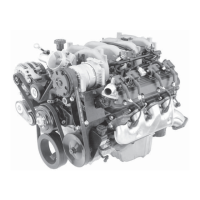WORKHORSE CUSTOM CHASSIS
Service Manual
W SeriesWCC
SECTION
6.2
PAGE
14
Engine Mechanical
W Series Chassis
TOC
© 2006 WorkhorseCustom Chassis — All Rights Reserved
DIAGNOSTIC STARTING POINT - ENGINE MECHANICAL — (8.1L/ L18 ENGINE)
Begin the system diagnosis by reviewing the Disassembled Views, Engine Component Description , Lubrication
Description , New Product Information , and the Drive Belt System Description. Reviewing the description and
operation information will help you determine the correct symptom diagnostic procedure when a malfunction exists.
Reviewing the description and operation information will also help you determine if the condition described by the
customer is normal operation. Refer to Symptoms - Engine Mechanical in order to identify the correct procedure for
diagnosing the system and where the procedure is located.
Symptoms - Engine Mechanical
Strategy Based Diagnostics
Perform a Diagnostic System Check - Vehicle before using the symptom tables, if applicable.
Review the system operations in order to familiarize yourself with the system functions. Refer to Disassembled
Views , Engine Component Description , Drive Belt System Description , Lubrication Description and New Product
Information .
All diagnosis on a vehicle should follow a logical process. Strategy based diagnostics is a uniform approach
for repairing all systems. The diagnostic fl ow may always be used in order to resolve a system condition. The
diagnostic fl ow is the place to start when repairs are necessary.
Visual/Physical Inspection
• Inspect for aftermarket devices which could affect the operation of the engine. Refer to Checking Aftermarket Accessories.
• Inspect the easily accessible or visible system components for obvious damage or conditions which could cause the
symptom.
• Inspect for the correct oil level, proper oil viscosity, and correct fi lter application.
• Verify the exact operating conditions under which the condition exists. Note factors such as engine RPM, ambient
temperature, engine temperature, amount of engine warm-up time, and other specifi cs.
• Compare the engine sounds, if applicable, to a known good engine and ensure you are not trying to correct a normal
condition.

